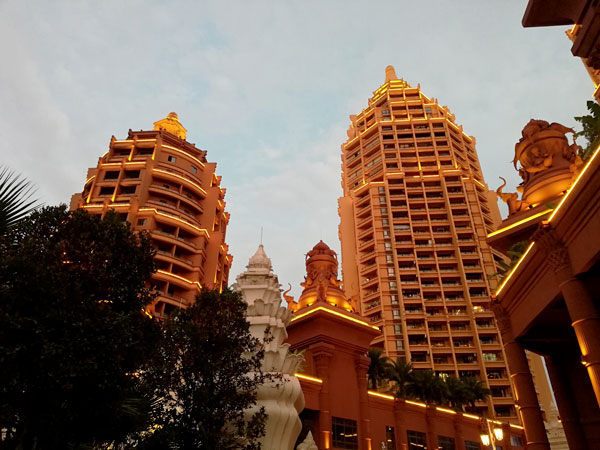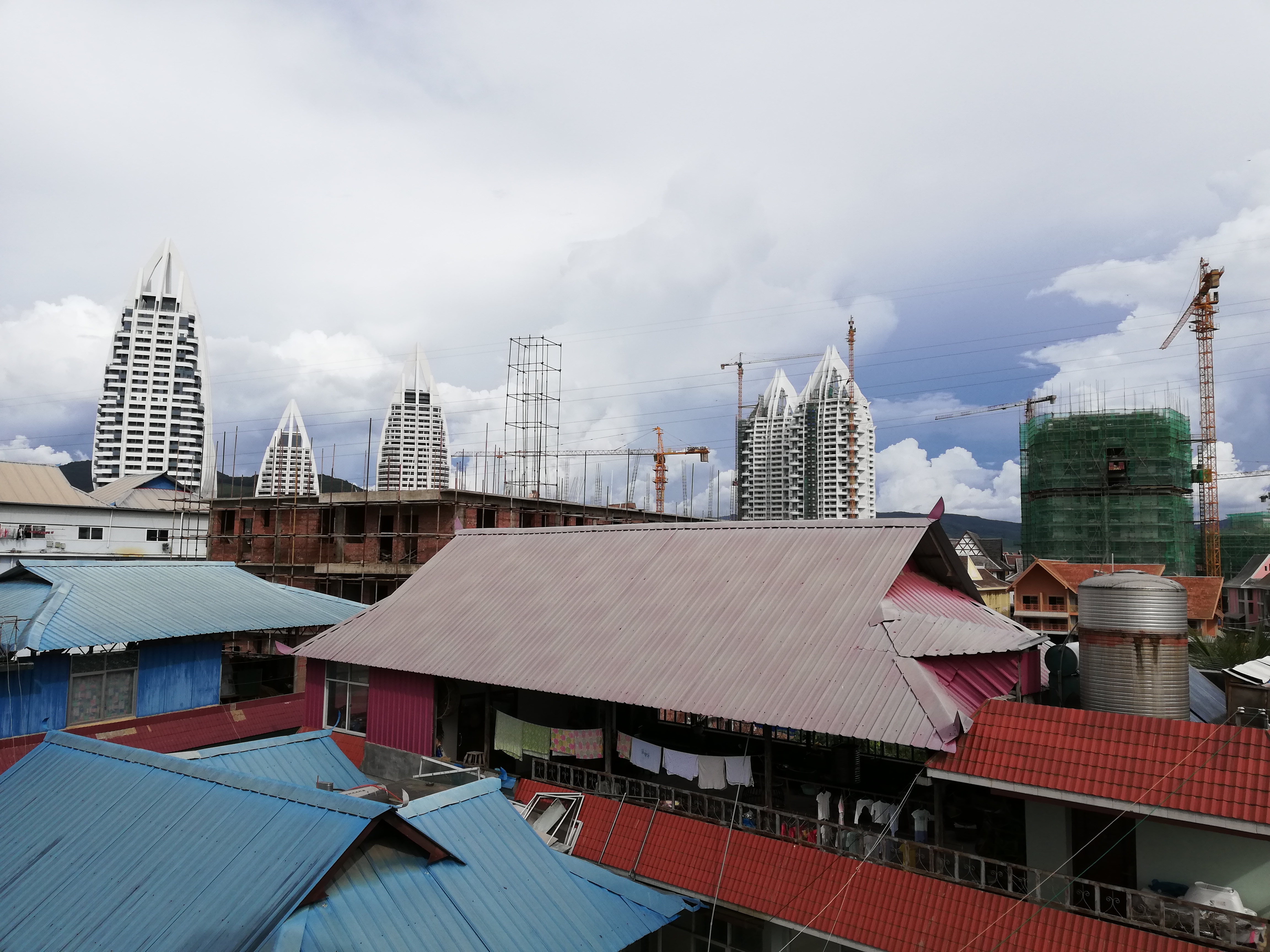
The galloping urbanisation of China, which is one of the main factors of the country’s economic growth, is destined to have a worldwide impact in terms of economic, social and environmental sustainability. It is no coincidence that the SARS-CoV-2 coronavirus developed in Wuhan, one of the most populated and polluted cities in the former Middle Kingdom. Forecasts predict that by 2050, two thirds of the Chinese population (approximately one billion people) will be living in urban areas. This new urban population will be the emerging middle class: it will drive the importation of goods and raw materials and it will be the protagonist of a major migration wave towards countries abroad.
The anthropologist Antonella Diana has recently concluded her Marie Skłodowska Curie fellowship at the Department of Asian and North African Studies at Ca’ Foscari University of Venice. Her project URBAN_CHINA. Urbanization in China’s Southwestern Borderlands. The Case of Jinghong, Xishuangbanna focused on urbanisation as a negotiation strategy which, since the beginning of the post-socialist period, has been employed by minority ethnic groups in the south-western borderlands in the Yunnan province.
Diana adopted an innovative approach which integrated urban studies with an ethnographic study of the city as a social space. The researcher focused in particular on the emerging, multi-ethnic city of Jinghong (in the area in which China borders Laos and Myanmar) and specifically on the Tai/Dai community in five rural villages that, since the 1990s, have gradually been incorporated into the city of Jinghong: Jinglan, De, Tin, Long Khwan and Long Feng.
The research considers the last twenty years of post-socialist China, a period in which urbanisation has been one of the main drivers of social change and of market-oriented politics. However, this urbanisation has assumed peculiar traits on the south-western borderlands which the Yunnan province belongs to. Instead of following the logic of industrial development, urbanisation in this area has resulted in a political and economic expansion from the centre to the periphery.
The city of Jinghong is a prime example of this peculiar urbanisation process. Under communist rule, Jinghong, once a quiet rural village, has transformed into an expanding frontier city. In the 1980s, Jinghong, due to its climate, tropical environment, and local ethnic cultures, became an exotic paradise for Chinese tourists. At the same time, the city became a commercial hub for China, Laos, Burma and Thailand. In the last ten years, Jinghong has experienced a construction boom: in 2018, housing prices for new building complexes were the highest in the Yunnan province.
The actors of this process of urban growth are the local Tai residents. Tai people are one of the thirteen ethnic minorities in the Xishuangbanna Dai Autonomous Prefecture. Tai people, who are traditionally farmers, have been subjected to state-driven land expropriation and to urban planning which has focused on order and aesthetics, rather than on people’s wellbeing and social inclusion.
However, Diana also observes that the urbanisation of this frontier area is a dialectical process between “state soft capitalism” space-making and an ethnic minority’s place-making. In her words,
“As the Chinese state continues to pursue the national integration of ethnic minority subjects under the rubric of modernity and economic development, Jinghong's contemporary urban space emerges as a politically contentious arena where to analyse the ways in which long-standing ethnic minority residents strive to carve out a new modern identity as Chinese citizens in the emerging frontier urbanscape”
According to the regulations of Chinese state, the architectural décor and style of frontier urbanisation should reflect “ethnic characteristics” (minzu tese). This approach is supposed to sit well with the ethnic minorities and show ethnic-cultural sensitivity. However, in some cases the appropriation of ethnic minorities’ aesthetics has resulted in a somewhat desecrating effect: the architectural shapes and sacred ornaments of Buddhist temples have been employed in spaces that will become restaurants, guest houses and bars.
The owners and tenants of the buildings in the new residential neighbourhoods in Jinghong are, for the most part, members of the emerging Han middle class. With very few exceptions, most Tai people do not live in the new neighbourhoods which have risen on what used to be their farmland.
Despite this, and despite the fact that the economic benefits have been considerably greater for the local government and developers than for the former land usufructuaries, Tai people have welcomed the new development and embraced the state ideology of modernisation. In doing so, Tai people have actively negotiated with the state to obtain compensations and benefits for the expropriation of their land – a requisition that, in their view, is less than transparent.
Moreover, the Tai people’s involvement has been essential to the requalification projects promoted by the state in the ethnic minority areas. In fact, the village chiefs mediated, as brokers, among the communities, the building contractors and the state; some young Tai people collaborated, too.

As the Tai villages were integrated into the city, Tai people started to abandon their agricultural economy. On the land which hosted their homes, 80 percent of Tai urban residents have built multi-storey buildings, with little (if any) respect for the local government’s urban planning guidelines. These buildings are rented out to Han migrants or to members of other ethnic groups. Therefore, Tai villages have become dormitory suburbs, commercial areas for retail and small businesses, which are mainly managed by Han people.
The active participation of Tai people in the creation of the urban place is evident in their attempt to create a welfare system for the village with the capitalisation of the collective land that was excluded from the expropriation. Tai people have rented out this collective land to Han farmers-entrepreneurs. Thanks to land rentals and house rentals, the living conditions of the new generations of Tai people in the city have improved. However, social and economic differences have also been exacerbated. Moreover, boredom, alcohol consumption and gambling have become widespread among the rentiers and their unemployed children.
Residents still refer to their communities as “Tai villages” (baan tai) and maintain a strong sense of identity in connection with place. Rituals are the field in which the sense of belonging to a place has been consecrated above all else. This happens by means of two types of ceremony: “feeding the village spirit” (liaen dun baan) and the inauguration of new homes (kheun heun mai).
In conclusion, frontier urbanisation in the late post-socialist era is not a one-way, top-down process, in which the state is the active party and the ethnic minority residents are passive. Far from that, it is a complex, contested dynamic of social and spatial transformation in which minority ethnic groups, together with state actors, are co-protagonists in the modernisation of the Chinese periphery.










